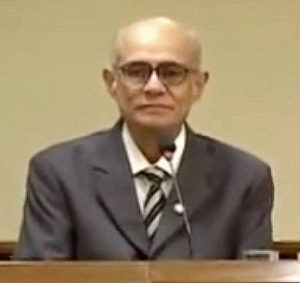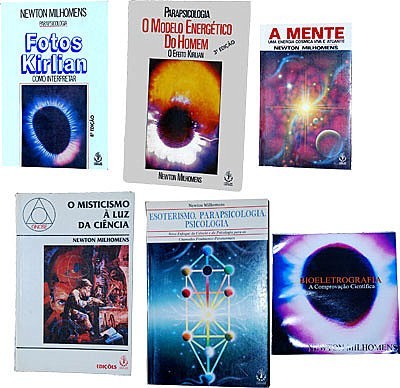KIRLIANOGRAPHY RESEARCH IN BRASIL
K. Korotkov
In April 1999 in a Brasilian town Curitiba, the IV Brasilian Congress on Kirlianography, for which I was honored with making a review lecture on GDV methods and results, was held.
Brasil is a fascinating and picturesque country with beautiful rivers, waterfalls, sandy beaches and, what is more, with cheerful, kindhearted and sympathetic people. The Brasilians smile to each other on the streets, solve all their problems joking, have breakfast at 5 o’clock in the morning after a night dancing samba and lambada. They do not drink a lot, comparatively, and mainly prefer water and wonderful Brasilian coffee; only twice I noticed the drunk. And at that, even the cars consume the drinking alcohol rather than a more expensive gasoline! And the Brasilian restaurants! This is a particular poem!

Naturally, Brasil, as any other country, faces its problems. One of these is the problem of health, although the abundance of sun, fruit and the ideal figures of Brasilian women somehow reduce the urgency of this problem. Amongst the methods of investigation the state of health Kirlianography occupies an honorary place. Thousands of experts successfully take advantage of Kirlian photography for the diagnostics and analysis! And all that is due to one person, Prof. Newton Milhomens, who created his own unique approach and original diagnostic system.

Prof. Milhomens photographs the kirlianograms of fingers using a colour photographic film and applying an ordinary generator of the simplest configuration. At that the imprints amaze with plenty of colours red, orange, yellow, green, cyan, blue all colours of the spectrum! And in Prof. Newton’s system each colour has a special diagnostic value [1].
Where does such an abundance of colour originates from? Why these results are not proven by the other Kirlian cameras? The detail study of Prof. Milhomens’s standard has given us an opportunity to answer this intriguing question.
Figure 1 displays the layout of Prof. Milhomens’s camera. A patient places finger 1 on the photographic film 2 and presses, crushing a soft layer 3. The operator pushes the button, applying voltage to the electrode 4, the exposition continues for 4 seconds.
With the help of the refined experiments W. Picler disclosed that a discharge appears both on the surface of finger and on the backside of the photo-film in the aerial cavities 5. Figure 2 demonstrates the photo-film structure. On the top of the emulsion is the blue colour-sensitive layer 1. Light quanta from the discharge 5 penetrate this layer and create photo-image. Filter 2 prevents all rays below 500 nm from reaching bottom layer 3, sensitive to red light. It is shown that the spectrum of Kirlian fluorescence mainly consists of lines of the second positive system of nitrogen and oxygen, i.e. of the blue-cyan part of the spectrum [2,3]. Therefore, the red colour appears rarely on the ordinary Kirlian photographs.
If the photo-film is tightly pressed to the electrode in Prof. Milhomens’s camera, only blue-cyan colours are left. However, if a discharge 5 passes from the backside of the photo-film, the photons, either straight or reflected from the backing, fall on the “red” photo-sensitive layer 3. A lot of these photons absorbed by antihalation layer 4, so for producing significant density of “red” photo-layer at minor signal strength one need large overexposure – four seconds in Prof. Milhomens’s camera. Under the decrease of exposition the colours disappear. Thus, there are no red photons in the Prof. Milhomens’s camera the red colour is exposed by the blue-cyan photons.
How do the colours correspond to a patient’s state? The photo-film layer cuts all electron and ion emission processes from the skin surface, therefore at the backside only the photon component remains. Figure 3 schematically shows the situation of electric field distribution in the system. From this scheme it is obvious that the presence of a finger leads to the formation of the specific field situation or, in other words, of the field intensity distribution in each place of surface AA, depending upon electro-physical characteristics of the finger. In each place discharge intensity is depended on the field intensity and, consequently, depends on the finger characteristics and, hence, on the health and psychic state of the patient. By means of long empirical investigation Prof. Milhomens discovered correlation between the colours and geometrical shapes on the photographs and the diseases.
The fact that Milhomens’s cameras are widely used in Brasil is the evidence of the method’s importance. It was published some papers confirming diagnostic value of this technique [4,5,6]. It is a desire to believe in the diagnostic significance of Prof. Milhomens system.
The camera’s construction may be improved. The colours depend upon the level of pressure of a finger, which is by no means controlled. In addition, this level changes in the process of exposition, as it is physically impossible to keep the constant heavy pressure during four seconds. Unsteady compression of the soft layer 3 (fig.1) results in the change of aerial openings under the photo-film. Besides that we can name the instability of an ordinary Kirlian generator and the common moments for all the Kirlian techniques: the necessity of a dark camera, long period of photo-processing, lack of the quantitative data processing. At the same time the empirical findings of Prof. Milhomens are worthy of the rapt attention and his technique will take an honorary place in the history of Kirlian photography.
Prof. Milhomens’s experience may turn out to be priceless. At the present moment Prof. Milhomens together with Doctor Roberto Cesar Leite, an outstanding physician and the Director of the Centro De Medicina Integrada, participates in the introduction of the GDV technique in Brasil. Within many years Dr. R. Leite has been developing alternative approaches to the treatment of cancer and has achieved great success in this area.
24, 25, 26 November 2000 International Unit for Medical and Applied Bioelectrography will have the Fifth Official World Conference “Kirlionics 2000” in Curitiba, Brasil.
References
- Milhomens N. Fotos Kirlian Como Interpretar. Ibrasa. Sao Paolo. 1997.
- Korotkov K. Aura and Consciousness. Kultura. St.Petersburg. 1999.
- Picler W. This collection of papers.
- Hélio Grott Filho. Oncolgical kirliangraphical diagnosis. “Revista do Hospital das Forças Armadas”. Dec. 1987
- Coutinho R.E. Contribution for the study of the kirliangraphic alterations in the sport activity (dissertation of mastery). Federal University of Rio de Janeiro. 1989
- Auri Silveira da Silva. Photo Kirlian, a new tool of safety’s engineering: reality or fiction? Federal University of Santa Catarina. 1987.
